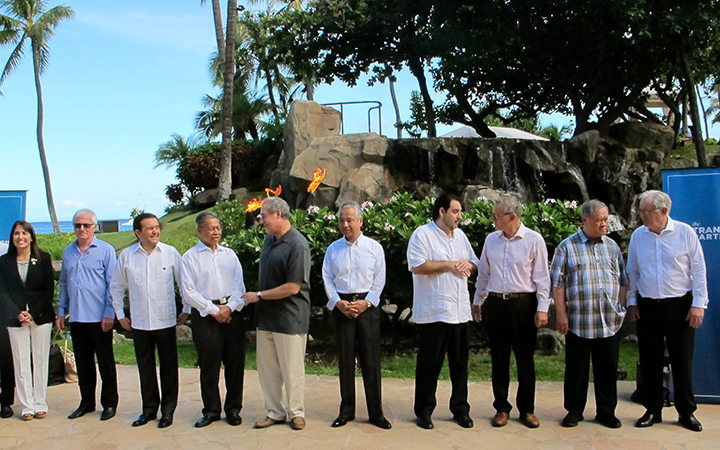LAHAINA, Hawaii — Ministers from a dozen Pacific Rim nations meeting at a Hawaii resort Friday were wrapping up four days of talks on a new trade agreement that would cover nearly 40 percent of the global economy.
The Trans-Pacific Partnership negotiations are aimed at erasing most tariffs and other barriers to trade and investment among participants. It would also clarify and standardize trade rules, making it easier for companies to sell goods and services in the Pacific Rim.
The wide-ranging discussions have addressed tariffs on autos, rice and dairy products, as well as intellectual property protections for pharmaceuticals.
READ MORE: Canada’s dairy stance frustrates TPP talks: New Zealand envoy
The talks have also covered establishing environmental protections for participant nations, which range from developing countries like Vietnam to industrial powers like Japan.
The Obama administration has said a pact would boost U.S. economic growth and help keep high-quality jobs in the country by increasing exports.
Critics have complained that the deal is being negotiated in secret and that it favors multinational corporations over workers and consumers.
Ministers from the 12 countries were scheduled to hold a news conference later Friday at a hotel on Maui’s Kaanapali Beach, where they have been meeting since Tuesday.
READ MORE: Harper government hopes TPP deal is signed before election campaign kickoff
The proposed deal is a central element of Obama’s efforts to boost U.S. influence in Asia and to serve as an economic counterweight to China.
The U.S. came to the Maui round of negotiations strengthened by the Obama administration’s successful legislative fight winning fast-track negotiating authority. This allows Congress to approve or reject trade agreements, but not change or delay them.
The agreement was proposed by Chile, New Zealand and Singapore in 2002, but Washington has taken the lead in promoting it since joining the talks in 2008.
READ MORE: Mulcair urges Harper to defend supply management during TPP negotiations
Participants include the United States, Australia, Brunei, Canada, Chile, Japan, Malaysia, Mexico, New Zealand, Peru, Singapore and Vietnam.
China, the world’s second largest economy after the U.S., is not part of the talks. But there’s potential it could join the pact later.
Beijing has been negotiating a separate agreement with many of the same nations that’s called the Regional Comprehensive Economic Partnership. This pact would cover 16 countries, including the 10 members of the Association of Southeast Asian Nations as well as Australia, India, Japan, South Korea and New Zealand.




Comments